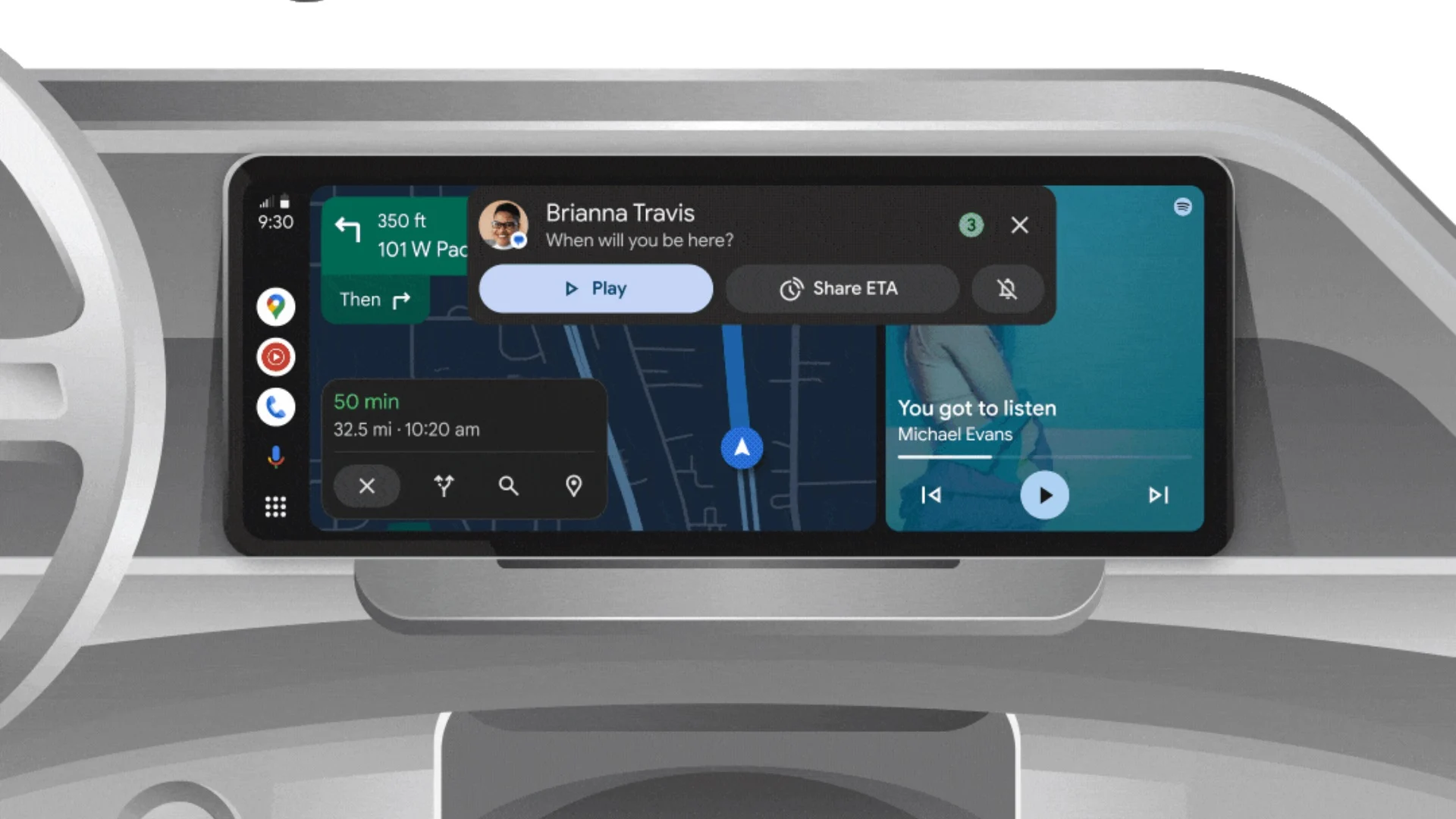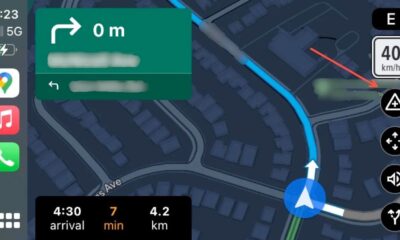News
Google introduces five new Android features for phones and smartwatches

Top 3 Key Points:
- New Features: Google adds five new Android features, covering search, accessibility, and safety.
- Enhanced Accessibility: Improvements to TalkBack and Chrome for better audio experiences.
- Wear OS Update: Offline maps for smartwatches to access maps without a phone.
Google has announced the release of five new features that will enhance the Android experience for users with compatible phones and smartwatches. Unlike the usual monthly updates that are primarily focused on Pixel devices, these new features will be available to a broader range of Android users.
The updates bring improvements across several Android services, including the “Circle to Search” feature, Chrome, TalkBack, the Earthquake Alert System, and Google Maps for Wear OS smartwatches.
Instant Song Search with Circle to Search
The “Circle to Search” feature is getting an exciting update for users who enjoy discovering new music. You’ll soon be able to quickly identify songs playing around you without switching between apps. By simply long-pressing the Home button or navigation bar, you can activate Circle to Search and tap the music button. This will instantly provide you with the song’s name, artist, and even a link to a YouTube video.
Improved Accessibility with TalkBack and Chrome
Google is enhancing accessibility with updates to TalkBack, Android’s screen reader designed for users with visual impairments. The new TalkBack will offer more detailed audio descriptions for images, powered by Gemini models on supported devices, making it easier for users to understand visual content.
Similarly, Chrome is being updated to support users who prefer listening to content rather than reading it. This update allows you to choose your preferred listening speed, voice type, and language, giving you more control over how you consume information.
Earthquake Alerts and Offline Maps for Smartwatches
Google’s Earthquake Alert System, which uses crowd-sourced technology to detect and warn users of earthquakes seconds before they happen, is now expanding to cover all U.S. states and six territories. This system aims to provide potentially life-saving alerts in the critical moments before an earthquake strikes.
Additionally, Google Maps is rolling out offline maps for Wear OS smartwatches. Soon, you’ll be able to download maps to your phone and access them directly from your smartwatch, even when you don’t have your phone with you. This feature is particularly useful for those who rely on their smartwatches while traveling or exercising.
These new features are part of Google’s ongoing effort to enhance the Android ecosystem, making it more accessible, user-friendly, and capable of providing critical information when you need it most. Keep an eye out for these updates, which will be available in the coming days.
Google Meet gets a fresh new look with Material 3 design

Google Meet is getting a big update to its look, thanks to the new Material 3 design. This change brings a cleaner and more modern style to the video calling app, making it easier and more enjoyable to use.
With Material 3, Google Meet now has rounder buttons, softer colors, and better spacing between elements. The main controls, like the microphone, camera, and end call buttons, are now larger and easier to tap. The icons and text are also clearer, which helps users find what they need quickly during a call.
Another improvement is the new “expressive” color system. This feature lets the app’s colors match your device’s wallpaper or theme, giving each user a unique and personalized experience. The changes also make Google Meet more accessible, as the new design is easier to read and use for everyone, including people with vision difficulties.
These updates are rolling out to both web and mobile versions of Google Meet. Google says the new look will help people feel more comfortable and focused during their meetings. Overall, the Material 3 update makes Google Meet not only look better but also work better for all its users.
Android
Easy ways to change Android Auto’s look with light and dark themes

Android Auto is a helpful tool that lets you use your phone’s apps safely while driving. It connects your phone to your car’s screen, making it easier to use maps, music, and calls. One of the features many people like is the ability to change how Android Auto looks by switching between light and dark themes.
How to switch between light and dark themes
Android Auto offers two main themes: light and dark. The light theme uses brighter colors, which can make the screen easier to see during the day. The dark theme uses darker colors, which can be more comfortable for your eyes at night or in low light.
To change the theme, follow these steps:
- Open the Android Auto app on your phone.
- Go to the settings menu.
- Find the “Theme” option.
- Choose between “Light,” “Dark,” or “Set by car” (this lets your car decide the theme based on the time of day or your car’s settings).
Why themes matter
Using the right theme can make driving safer and more comfortable. The light theme is good for bright days, while the dark theme helps reduce glare at night. Having these options means you can pick what works best for you, making Android Auto easier to use in any condition.
In short, Android Auto’s theme options are simple to use and help you drive more safely by making the screen easy to see, no matter the time of day.
Google Drive and Files by Google get fresh updates for easier use

Google is rolling out some helpful updates to two of its popular apps: Google Drive and Files by Google. These changes are designed to make managing your files and watching videos much smoother.
First, Google Drive is getting a new video player. Now, when you upload a video to Drive and open it, you’ll notice a fresh look that matches Google’s latest design style. The controls, like play and pause, are easier to use and look cleaner. This update makes it simpler to watch videos directly in Drive without needing to download them first.
Meanwhile, the Files by Google app is also getting a makeover. The app is adopting Google’s Material 3 design, which means it looks brighter and more modern. The buttons and menus are easier to see and use, making it simpler to find, move, and organize your files. There are also new color options and improved icons, so everything feels more user-friendly.
Both updates show Google’s commitment to making its apps more helpful and enjoyable to use. Whether you’re watching videos in Drive or sorting files on your phone, these changes aim to save you time and make things less complicated. If you use these apps, keep an eye out for these new features—they should arrive soon!
-

 Apps1 year ago
Apps1 year agoGboard Proofread feature will support selected text
-

 News1 year ago
News1 year agoSamsung USA crafting One UI 6.1.1
-

 Apps1 year ago
Apps1 year agoGoogle Contacts app testing new Besties Widget
-

 AI12 months ago
AI12 months agoGoogle Pixel 9 Pro may come with a complimentary one-year Gemini Advanced subscription
-

 Apps12 months ago
Apps12 months agoGoogle working on a new video editing feature for its Photo app
-

 Apps12 months ago
Apps12 months agoGoogle Maps lets you report traffic jams and accidents on Apple CarPlay, but not on Android Auto
-

 News1 year ago
News1 year agoBreaking: Samsung Galaxy S22 may get Galaxy AI features
-

 Apps1 year ago
Apps1 year agoGoogle Messages app will transform MMS chats into RCS










